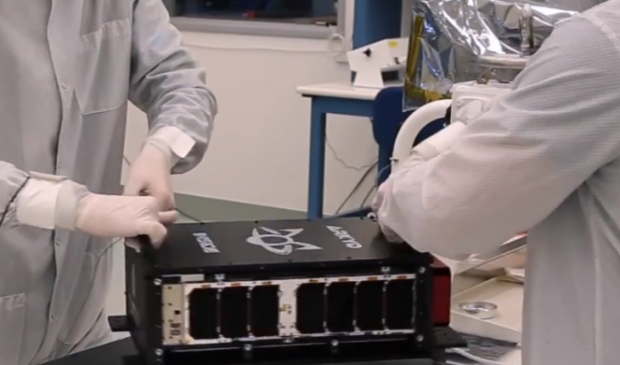
Breaking News
DRINK 1 CUP Before Bed for a Smaller Waist
 Nano-magnets may defeat bone cancer and help you heal
Nano-magnets may defeat bone cancer and help you heal
 Dan Bongino Officially Leaves FBI After One-Year Tenure, Says Time at the Bureau Was...
Dan Bongino Officially Leaves FBI After One-Year Tenure, Says Time at the Bureau Was...
 WATCH: Maduro Speaks as He's Perp Walked Through DEA Headquarters in New York
WATCH: Maduro Speaks as He's Perp Walked Through DEA Headquarters in New York
Top Tech News
 Laser weapons go mobile on US Army small vehicles
Laser weapons go mobile on US Army small vehicles
 EngineAI T800: Born to Disrupt! #EngineAI #robotics #newtechnology #newproduct
EngineAI T800: Born to Disrupt! #EngineAI #robotics #newtechnology #newproduct
 This Silicon Anode Breakthrough Could Mark A Turning Point For EV Batteries [Update]
This Silicon Anode Breakthrough Could Mark A Turning Point For EV Batteries [Update]
 Travel gadget promises to dry and iron your clothes – totally hands-free
Travel gadget promises to dry and iron your clothes – totally hands-free
 Perfect Aircrete, Kitchen Ingredients.
Perfect Aircrete, Kitchen Ingredients.
 Futuristic pixel-raising display lets you feel what's onscreen
Futuristic pixel-raising display lets you feel what's onscreen
 Cutting-Edge Facility Generates Pure Water and Hydrogen Fuel from Seawater for Mere Pennies
Cutting-Edge Facility Generates Pure Water and Hydrogen Fuel from Seawater for Mere Pennies
 This tiny dev board is packed with features for ambitious makers
This tiny dev board is packed with features for ambitious makers
 Scientists Discover Gel to Regrow Tooth Enamel
Scientists Discover Gel to Regrow Tooth Enamel
 Vitamin C and Dandelion Root Killing Cancer Cells -- as Former CDC Director Calls for COVID-19...
Vitamin C and Dandelion Root Killing Cancer Cells -- as Former CDC Director Calls for COVID-19...
Planetary Resources delivers Arkyd 6 asteroid mining technology demo for launch Dec 2017

It was moved like rollon luggage into a regular car and driven to where it will be prepped for launch.
The Arkyd 6 was built in compliance with the 6U CubeSat standard. It includes the core technology that will be used in the company's asteroid exploration program including a mid-wave infrared sensor, second-generation avionics, power systems, communications, and attitude determination and control systems.
The A6 instrument is a broadband imager spanning 3 to 5 microns within the infrared region of the electromagnetic spectrum. This region is sensitive to the presence of water – including that in hydrated minerals – and thermal energy, allowing it to be used as a tool to search for water on Earth and beyond. In support of our deep space exploration efforts, A6 is a part of Planetary Resources' research and development work to create an instrument capable of detecting water on near-Earth asteroids.
There are over 16,000 near-Earth asteroids that share a similar orbit to Earth. Asteroids contain the resources that make it possible to fuel and sustain life in space.



